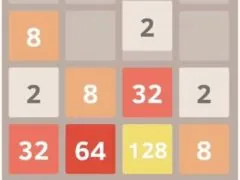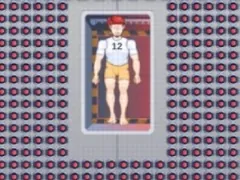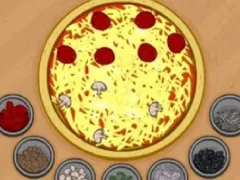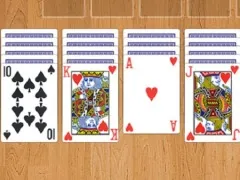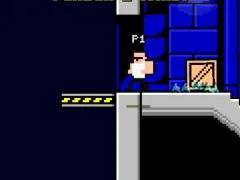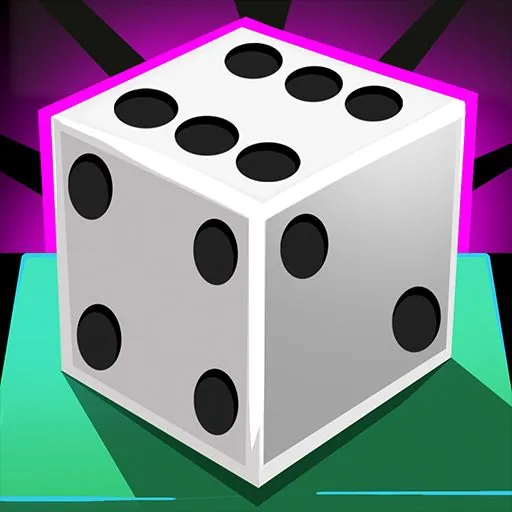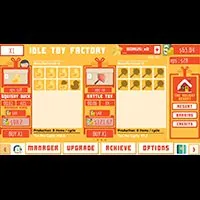PIANO TILES
SIMILAR GAMES
Game Description
Piano Tiles - COOLMATHGAMES
About Piano Tiles - COOLMATHGAMES
Welcome to the vibrant and exhilarating world of Piano Tiles, a captivating rhythm game that has enthralled players of all ages. At its core, Piano Tiles is a test of precision, speed, and musicality, demanding that players engage with a dynamic on-screen interface that mirrors the flow of music. The fundamental premise is elegantly simple yet profoundly challenging: swift, accurate taps on designated black tiles are paramount, while the contrasting white tiles must be meticulously avoided. This core mechanic forms the foundation of an intensely engaging gameplay loop that rewards focus and quick reflexes.
The experience of playing Piano Tiles is deeply intertwined with its auditory component. Each stage of the game is accompanied by a carefully curated soundtrack. We are talking about a diverse collection that spans the majestic beauty of classical compositions, echoing the works of legendary composers, to the infectious energy of contemporary hits that resonate with modern audiences. The music is not merely background noise; it is an integral part of the gameplay. The rhythm and tempo of the music dictate the pace at which the tiles appear and move across the screen. Players must attune themselves to these sonic cues, synchronizing their taps with the beat to achieve success. This harmonious integration of sight and sound creates a truly immersive experience, transforming a simple game into a musical journey.
The progression within Piano Tiles is designed to progressively elevate the challenge, ensuring that players remain on the edge of their seats. As players successfully navigate through the initial stages, the game introduces an escalating tempo. The speed of the tiles increases, demanding ever-sharper reflexes and heightened concentration. This gradual increase in difficulty is a hallmark of well-designed arcade-style games, providing a satisfying sense of accomplishment as players overcome each new threshold. The thrill lies not just in completing a song, but in doing so with increasing speed and complexity, pushing the boundaries of one's own capabilities. The game is a constant dance between anticipation and reaction, a captivating struggle against the relentless march of the tiles.
Accuracy is not just beneficial; it is absolutely crucial. A single misstep, a tap on the wrong tile, or a missed beat can bring the entire experience to an abrupt halt. This unforgiving nature of the game underscores the importance of precision. Each tap must be deliberate and correct, fostering a heightened sense of awareness and control. The penalty for error is immediate, reinforcing the need for unwavering attention to detail. This element of risk adds a layer of intensity, making every successful sequence of taps feel like a significant achievement. Players learn to anticipate, to react instantaneously, and to maintain composure under pressure. The pursuit of a perfect score becomes a compelling objective, driving players to refine their technique and achieve mastery.
The Core Gameplay Mechanics Unveiled
The foundation of Piano Tiles lies in its elegantly straightforward yet profoundly engaging gameplay loop. We are presented with a screen filled with a cascade of tiles, predominantly black, interspersed with crucial white tiles. The objective is clear and unwavering: to tap on the black tiles as they descend or move across the screen, all while making a concerted effort to avoid the white tiles. This binary choice, tap or avoid, forms the central tension of the game. The player's role is to act as a conductor, orchestrating a precise sequence of movements in perfect harmony with the accompanying music.
The timing of each tap is as critical as the selection of the correct tile. Accuracy is crucial, and the game provides immediate feedback to the player's performance. Successful taps are met with auditory and visual cues that reinforce the correct action and maintain the flow of the music. Conversely, an errant tap – striking a white tile or missing a black one – results in an immediate cessation of the game. This unforgiving consequence instills a sense of urgency and necessitates a high degree of focus. The game demands that players develop an internal rhythm, a sense of timing that aligns perfectly with the on-screen prompts and the musical accompaniment. This synchronization is the key to unlocking higher scores and progressing through the game's increasingly challenging levels.
As players demonstrate proficiency, the game dynamically adjusts to offer a greater challenge. The speed of the tiles increases significantly. What might begin as a leisurely pace quickly escalates into a rapid-fire sequence of taps. This escalating tempo is a core element of the game's addictive nature. It tests the player's reflexes to their absolute limit, pushing them to react faster and with greater precision. The thrill of keeping up with the accelerating pace is immense, creating moments of intense concentration and exhilaration. This constant push to adapt and perform under pressure is what makes Piano Tiles so compelling and replayable.
A Symphony of Sounds and Rhythms
The musicality of Piano Tiles is one of its most distinguishing features. The game transcends the typical arcade experience by integrating a rich and diverse selection of musical pieces. We encounter everything from the timeless elegance of classical masterpieces, where familiar melodies are reimagined within the game's framework, to the driving beats and catchy hooks of contemporary hits that appeal to a wide spectrum of musical tastes. This carefully curated soundtrack ensures that there is something for everyone, making the game enjoyable beyond its core mechanics.
The music serves a dual purpose: it provides an engaging auditory backdrop, enhancing the overall atmosphere, and, more importantly, it acts as a critical guide for gameplay. The rhythm of the music is the very pulse of the game. The tempo, the beat, the melodic phrasing – all of these elements are directly translated into the movement and appearance of the tiles on screen. Players must develop an intuitive understanding of this relationship, learning to anticipate the next note, the next beat, and thus the next tile to tap. This deep integration means that a player's musicality is as important as their dexterity. It's a harmonious convergence of auditory perception and motor skill.
The variety in the musical selection also contributes to the game's replayability and appeal. Whether you prefer the intricate compositions of a bygone era or the pulsing energy of modern pop, Piano Tiles offers a musical experience that resonates. Each song presents a unique challenge, with its own distinct rhythm and flow, requiring players to adapt their strategy and timing accordingly. The game becomes a journey through different musical landscapes, with each level offering a new sonic adventure and a fresh set of rhythmic puzzles to solve. The challenge is not just to survive, but to truly *feel* the music and let it guide your every tap.
Mastering the Challenge: Tips for Success
Achieving mastery in Piano Tiles requires a combination of sharp reflexes, impeccable timing, and a focused mindset. While the game's premise is simple, its execution demands dedication. We've observed that players who excel often employ specific strategies to enhance their performance and climb the leaderboards. Understanding these nuances can significantly elevate your gameplay and help you overcome the escalating difficulty.
One of the most fundamental aspects is developing a consistent tapping technique. Avoid erratic or overly forceful taps. Instead, aim for a smooth, controlled motion that allows for rapid successive inputs. Many proficient players utilize multiple fingers, strategically switching between them to maintain a continuous flow of taps. This multi-finger approach is particularly effective when the tile speed increases, enabling you to keep up with the rapid succession of black tiles without missing a beat. Experiment with different finger placements and coordination to find what feels most natural and efficient for you.
Focus on the rhythm above all else. While it's tempting to simply react to the visual cues, a deeper understanding of the music's rhythm is paramount. Listen intently to the beat and try to internalize it. Let the music guide your taps. This will allow you to anticipate the appearance of tiles, rather than simply reacting to them. This predictive element is crucial for maintaining accuracy, especially as the game accelerates. If you find yourself struggling with a particular song, try listening to it outside of the game to become more familiar with its rhythm and structure.
The game is designed to test your reflexes, but not solely through brute force. It’s about controlled, precise reactions. Learn to identify patterns in the tile sequences. While the speed increases, there are often underlying rhythmic patterns that repeat. Recognizing these patterns allows for more efficient and accurate tapping. Furthermore, don’t be discouraged by mistakes. Each error is a learning opportunity. Analyze what went wrong – was it a lapse in focus, a misjudged timing, or an issue with your tapping technique? Use these insights to refine your approach for the next attempt. Persistence is key, and every play session offers a chance to improve.
We also recommend finding a comfortable playing environment. Minimize distractions and ensure you have a stable connection if playing online. A relaxed, focused state of mind will allow you to fully immerse yourself in the game and perform at your peak. Remember, Piano Tiles is a journey of continuous improvement. Celebrate your progress, learn from your setbacks, and most importantly, enjoy the thrilling musical challenge!
Unpacking the Appeal of Piano Tiles
The enduring popularity of Piano Tiles can be attributed to a confluence of factors that resonate deeply with a broad audience. At its heart, the game offers a compelling blend of simplicity and depth, making it accessible to casual players while simultaneously providing a challenging experience for those seeking to hone their skills.
One of the most significant draws is its universal theme: music. The ability to interact with and be guided by music is inherently engaging. The game taps into our innate connection with rhythm and melody, transforming passive listening into an active, participatory experience. The soundtrack's diversity, encompassing both classical masterpieces and contemporary hits, ensures that a wide range of musical preferences are catered to, broadening the game's appeal. This musical variety also contributes to replayability; different songs offer different rhythmic challenges, keeping the gameplay fresh and exciting.
The core mechanic itself is elegantly designed. The clear objective – tap the black tiles, avoid the white ones – is immediately understandable. Yet, the execution of this simple rule, especially as the speed of the tiles increases, requires considerable skill and dedication. This balance between accessibility and challenge is a hallmark of many successful games. Players can pick up the game and enjoy it instantly, but they can also dedicate time to mastering its intricacies, striving for higher scores and faster completion times. The sense of accomplishment derived from successfully navigating a fast-paced musical sequence is incredibly rewarding.
Furthermore, Piano Tiles taps into our desire for immediate feedback and measurable progress. Each tap, each success, and each failure is instantly registered, providing clear data on performance. This allows players to track their improvement over time, fostering a sense of growth and mastery. The competitive element, often present through leaderboards, further fuels this drive, encouraging players to push their limits and strive for perfection. The thrill of achieving a personal best or climbing the ranks is a powerful motivator.
The game's design also fosters a state of flow, a concept described by psychologist Mihaly Csikszentmihalyi, where individuals become fully immersed in an activity, experiencing energized focus, full involvement, and enjoyment. The combination of precise sensory feedback, clear goals, and a balance between skill and challenge in Piano Tiles creates an ideal environment for achieving this state. Players become so engrossed in the rhythmic dance of taps that the outside world fades away, leaving only the music and the tiles.
In essence, Piano Tiles offers an addictive and satisfying experience by expertly combining musical engagement, intuitive gameplay, and a progressively challenging curve. It’s a game that appeals to our senses, our competitive spirit, and our desire for skill development, making it a consistently popular choice for players worldwide.
Exploring Variations and Similar Experiences
While the core Piano Tiles experience is highly addictive, the world of rhythm games is vast and offers a multitude of variations that build upon similar principles. Players who find themselves captivated by the precise tapping and musical synchronization of Piano Tiles may discover a whole new universe of engaging challenges and unique gameplay mechanics by exploring these related titles.
Many games adopt the fundamental concept of tapping on-screen cues in time with music. These can range from simple, tile-based interfaces similar to Piano Tiles, to more complex interactions that involve swiping, holding, or multi-touch gestures. The musical genres explored also vary widely, with some games focusing on specific styles like EDM, K-Pop, or J-Rock, while others offer a broad mix, much like Piano Tiles itself.
Some rhythm games introduce narrative elements, weaving a story around the musical gameplay. Players might be tasked with helping a character progress through a journey, with each musical performance contributing to their advancement. Other games focus heavily on customization, allowing players to personalize their avatars, unlock new visual themes, or even create their own musical challenges.
The introduction of different game modes also adds significant variety. Beyond the standard 'play a song' mode, some titles offer endless modes where the objective is to survive for as long as possible against increasing difficulty, or challenge modes with specific objectives, such as achieving a certain score with limited mistakes. Cooperative and competitive multiplayer modes are also common, allowing players to test their skills against friends or other players from around the globe.
Beyond direct imitators, there are broader categories of games that share a spirit of rhythmic interaction. Dance games, for instance, require players to execute specific movements in time with on-screen prompts, often using motion controllers. Music creation and sequencing software, while not strictly games, appeal to a similar desire to interact with and manipulate musical elements.
For those who appreciate the precise timing and reaction-based gameplay of Piano Tiles, exploring titles that emphasize speed, accuracy, and musical integration will likely prove highly rewarding. The core appeal of synchronizing actions with auditory cues is a powerful design principle that has spawned countless enjoyable and challenging gaming experiences. Whether you are looking for a slightly different take on the tile-tapping formula or a completely new way to engage with music through interactive gameplay, the world of rhythm games offers a rich and diverse landscape to explore.
At https://coolmathgame.gitlab.io/, we are dedicated to providing access to a wide array of engaging and mentally stimulating games. While Piano Tiles is a standout example of a rhythm-based challenge, our collection encompasses a diverse range of genres designed to entertain, educate, and inspire players of all interests. We invite you to explore our offerings and discover new favorite pastimes that sharpen your mind and provide hours of enjoyable gameplay.
Piano Tiles is a fast-paced rhythm game that challenges players to tap on the black tiles while avoiding the white ones, all set to a variety of musical compositions ranging from classical masterpieces to contemporary hits. Each tap must be timed with the rhythm of the music, and accuracy is crucial as a single mistake means the game is over. As players progress, the speed of the tiles increases, testing reflexes and promoting a thrilling gameplay experience.
Enhance Your Experience with Various Modes
The game features several modes that cater to different skills levels and musical tastes. Whether it’s racing against the clock in Time Trial, playing through preset songs in Classic mode, or exploring lengthy compositions in Endless mode, Piano Tiles offers a dynamic platform for improving hand-eye coordination and musical perception. New songs are regularly added, keeping the game fresh and engaging for returning players. This simple yet addictive game has captured the attention of millions, offering a compact musical challenge at your fingertips.
